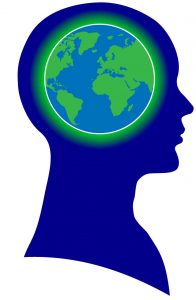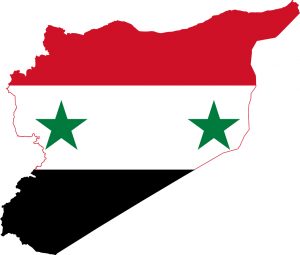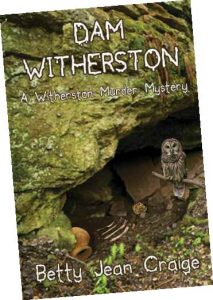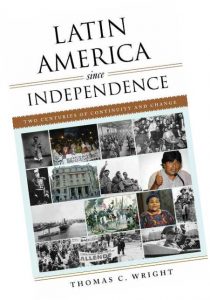 The study of our changing climate has a newcomer: the social psychology of climate change. Professor of Psychology Adam Pearson is helping lead the way with the growth of a new branch he and his collaborators have coined “social climate science.”
The study of our changing climate has a newcomer: the social psychology of climate change. Professor of Psychology Adam Pearson is helping lead the way with the growth of a new branch he and his collaborators have coined “social climate science.”
What’s Next For:
Revolutions?
Syria?
Mexico?
Japan?
The United States?
Earthquake Safety?
Climate Action?
California Water?
Climate Science?
Solar Energy?
California Fruit Farming?
Technology Investing?
Nanoscience?
Digital Storage?
Artificial Intelligence?
Cyber-Threats?
Social Media?
Space Exploration?
Science Museums?
The Sagehen?
Biodiversity?
The Blind?
Big Data?
Mental Illness?
Health Care Apps?
Maternity Care?
Etiquette?
Ballroom Dance?
Thrill Seekers?
Outdoor Recreation?
Funerals?
Writers?
Movies?
Manga?
Alt Rock?
Women in Mathematics?
Pearson is working with other psychologists interested in what motivates different groups to get involved with the issue of climate change and how decision-makers and influencers can engage a broader segment of the population around these issues. Pearson recently co-edited a special issue of Group Processes & Intergroup Relations that seeks to understand how group dynamics influence how people perceive and respond to climate change, including groups we may often not think about when it comes to environmental problems.
“There’s a myth of the white environmentalist,” says Pearson. “There’s a perception that Whites are most concerned about climate change, but when you look at public opinion polls, those surveys show that minority groups, specifically Latinos, Asian Americans and African Americans, and lower-income Americans are as or more concerned about environmental issues than the prototypic image of an environmentalist often encountered in the media, who is White, affluent, and highly-educated. Some minority groups like Latinos and Asian Americans identify more as environmentalists than Whites.”
Pearson adds that scientists and practitioners need to better understand the consequences of these prevalent stereotypes. That understanding will help answer questions of how people in power—environmental advocates and policy-makers—can better engage minority groups who represent a fast-growing segment of the US public and are often the most negatively impacted by issues like climate change.
“All groups need a say for creating communities that are livable—whether living in coastal areas facing flooding, hurricanes, wildfires, air pollution, or soil contamination. Take the textbook examples of the Flint water crisis or Hurricane Katrina. Some segments of the public were disproportionately affected by these crises, and climate change will exacerbate these disparities.”
Pearson points to the past few decades of research on health disparities and how cross-disciplinary collaborations have helped move the needle on global issues like the HIV/AIDS epidemic that also disproportionately affect communities of color. “There are blueprints out there and a lot of that work comes from within my field, from psychology. Psychologists have contributed to reducing health disparities, and I’m optimistic that we can do the same for environmental disparities.”
 What’s a California winter with no snow-covered peaks? How will we even know it’s December?
What’s a California winter with no snow-covered peaks? How will we even know it’s December? Will the United States meet its emissions reduction goals as outlined in the Paris Agreement? Unlikely, says recent grad Tom Erb ’18. Without a strong, federal price on carbon—a long shot under the current administration—the U.S. will surely fail.
Will the United States meet its emissions reduction goals as outlined in the Paris Agreement? Unlikely, says recent grad Tom Erb ’18. Without a strong, federal price on carbon—a long shot under the current administration—the U.S. will surely fail. Someday—probably in some crowded city in a developing country—an earthquake will come along that causes a million casualties, warns seismologist and President of GeoHazards International Brian Tucker ’67.
Someday—probably in some crowded city in a developing country—an earthquake will come along that causes a million casualties, warns seismologist and President of GeoHazards International Brian Tucker ’67. Susan McWilliams doesn’t mince words when it comes to predicting the future of the American Experiment.
Susan McWilliams doesn’t mince words when it comes to predicting the future of the American Experiment. Japan may be the economic canary in the coal mine, Matt Sanders ’00 believes. And at the same time, it may already be transforming itself into the economy of tomorrow.
Japan may be the economic canary in the coal mine, Matt Sanders ’00 believes. And at the same time, it may already be transforming itself into the economy of tomorrow. With the July 1 election of Andres Manuel Lopez Obrador (widely known by his initials, AMLO) as president, Mexico stands at a historic turning point, one that leaves Professor of Latin American Studies Miguel Tinker Salas cautiously optimistic about the prospect for real change.
With the July 1 election of Andres Manuel Lopez Obrador (widely known by his initials, AMLO) as president, Mexico stands at a historic turning point, one that leaves Professor of Latin American Studies Miguel Tinker Salas cautiously optimistic about the prospect for real change. Predicting the future in a conflict as multi-faceted as the Syrian Civil War is daunting, and Politics Professor Mietek Boduszynski says his thoughts on the matter have shifted several times, including last May, when the United States pulled out of the Iran nuclear deal.
Predicting the future in a conflict as multi-faceted as the Syrian Civil War is daunting, and Politics Professor Mietek Boduszynski says his thoughts on the matter have shifted several times, including last May, when the United States pulled out of the Iran nuclear deal. Where in the world will the next revolution happen? And what will it look like? These are questions Associate Professor of Sociology Colin Beck thinks about a lot. The author of Radicals, Revolutionaries and Terrorists is now at work with five other scholars on a new book titled Rethinking Revolutions, and last fall, three of his coauthors joined him at Pomona for a panel session called “The Future of Revolutions.” As part of that event, Beck asked each of them to make a prediction as to where the next revolution will unfold.
Where in the world will the next revolution happen? And what will it look like? These are questions Associate Professor of Sociology Colin Beck thinks about a lot. The author of Radicals, Revolutionaries and Terrorists is now at work with five other scholars on a new book titled Rethinking Revolutions, and last fall, three of his coauthors joined him at Pomona for a panel session called “The Future of Revolutions.” As part of that event, Beck asked each of them to make a prediction as to where the next revolution will unfold. Dam Witherston
Dam Witherston Revolution Against Empire
Revolution Against Empire My Dark Horses
My Dark Horses The Sensational Past
The Sensational Past Military Thought in Early China
Military Thought in Early China Latin America Since Independence
Latin America Since Independence Love and Narrative Form in Toni Morrison’s Later Novels
Love and Narrative Form in Toni Morrison’s Later Novels Shake It Up
Shake It Up